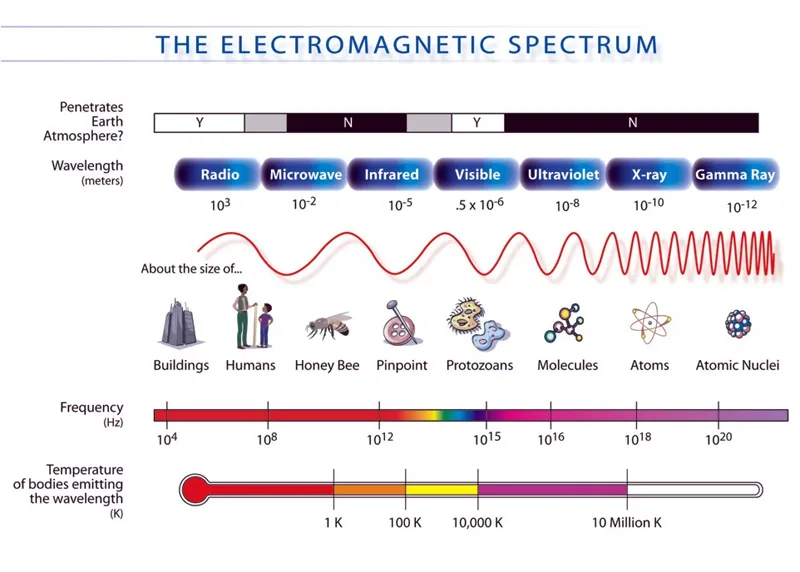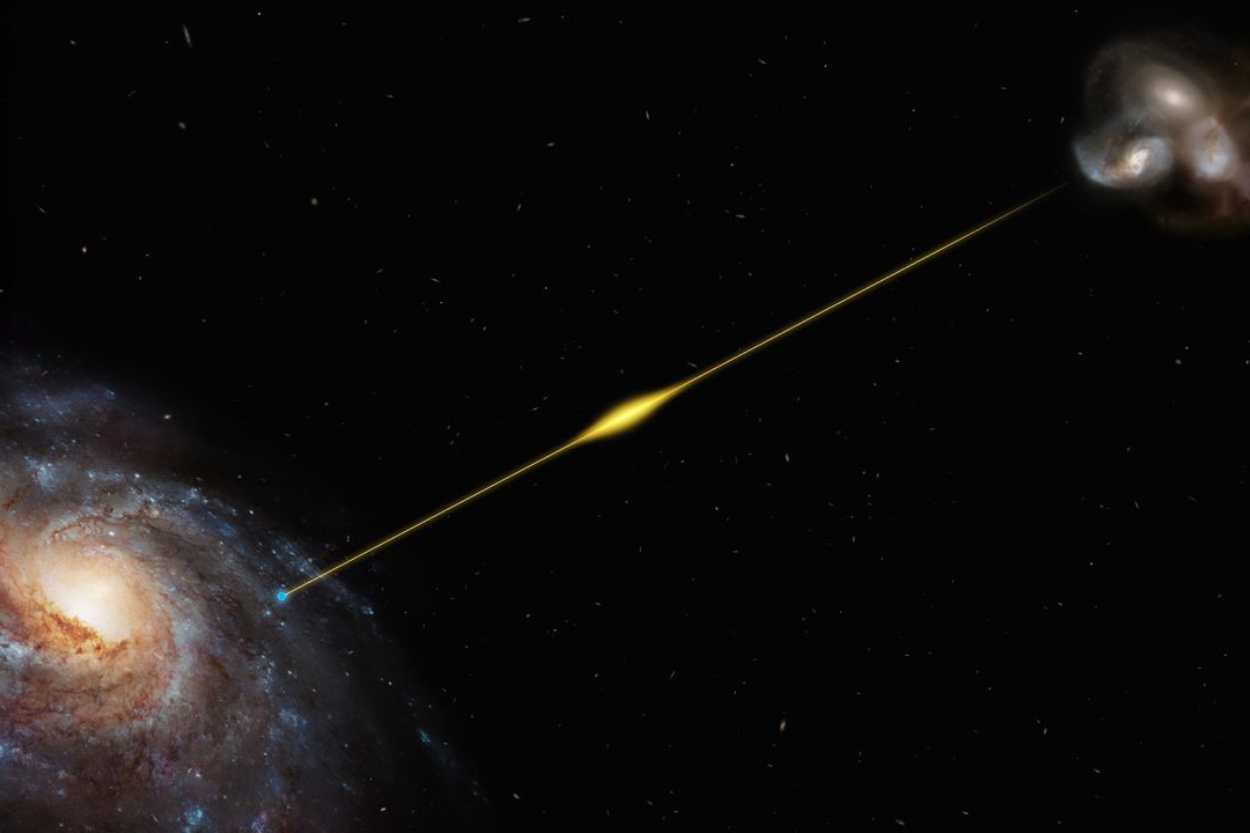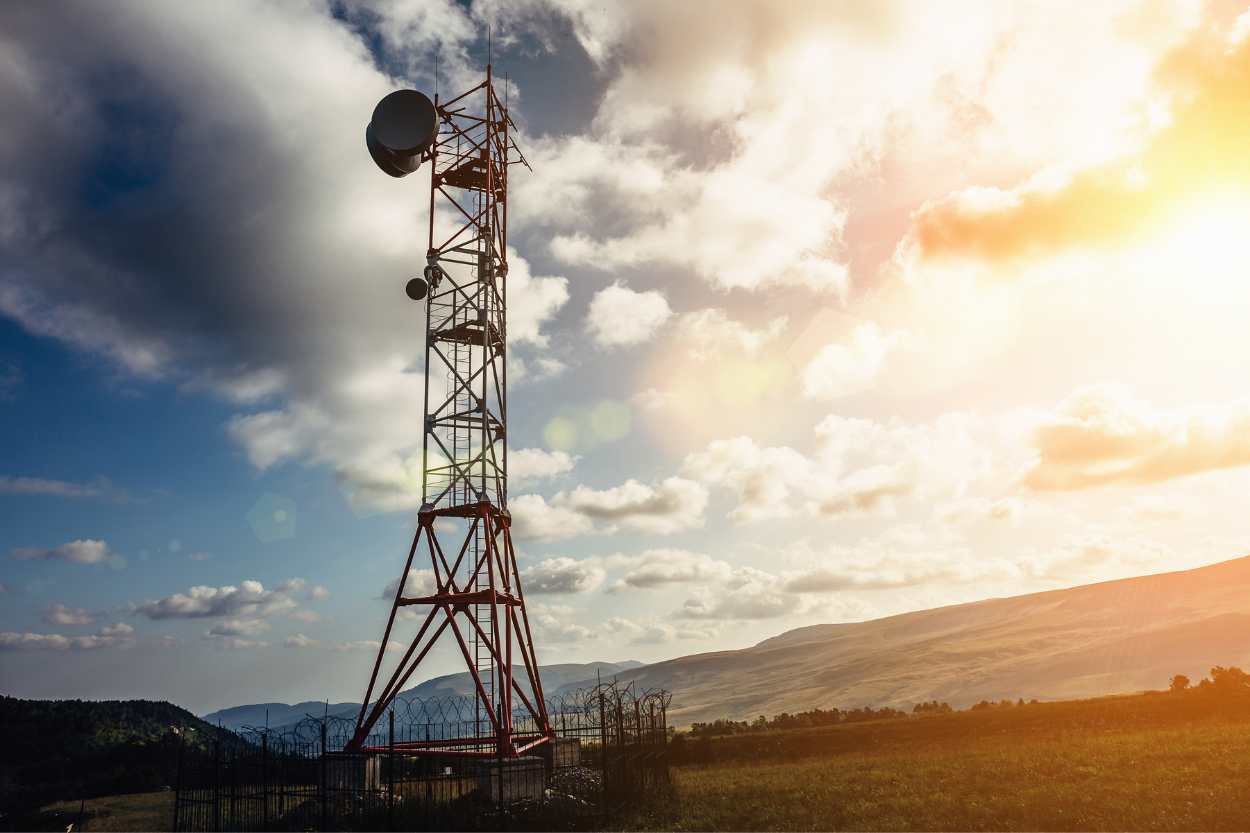Radio waves, a type of electromagnetic radiation, navigate the cosmos at the speed of light, an impressive 299,792 kilometers per second. This allows for rapid communication over vast distances, making them the backbone of modern wireless communications. Whether it’s facilitating global TV broadcasts, enabling your smartphone, or exploring the depths of space, radio waves play an integral role in the transmission of information.
Key Takeaways
- Radio waves travel at light-speed across various mediums.
- They are essential for global communication and space exploration.
- Technological innovations continually expand radio wave applications.
Basics of Radio Waves
Understanding the fundamentals of radio waves is essential to grasp how various forms of communication and information transfer operate around you. These waves are a ubiquitous part of your daily life, from the music you hear on your car radio to the invisible signals that enable your smartphone’s connectivity.
Definition and Nature of Radio Waves
Radio waves are a type of electromagnetic wave, characterized by their role in wireless communication. They are energy that travels through space, oscillating electric and magnetic fields. At their core, radio waves are just like any other form of electromagnetic wave, which includes light visible to the human eye.
The Electromagnetic Spectrum
The electromagnetic spectrum is a comprehensive range of electromagnetic energy, organized by frequency and wavelength. Radio waves sit at the lower frequency end of this spectrum, typically ranging from about 30 Hertz (Hz) to 3 Terahertz (THz). They are longer in wavelength than higher-energy electromagnetic waves such as X-rays and gamma rays.

The Speed of Radio Waves
In a vacuum, radio waves, like all electromagnetic waves, travel at a constant speed of approximately 299,792 kilometers per second (or about 186,282 miles per second). This is popularly referred to as the speed of light. Regardless of their frequency or wavelength, the speed remains constant in a vacuum, ensuring that communication signals can be reliably transmitted over vast distances in space.
Radio Wave Propagation
Understanding how radio waves travel is essential when delving into the physics of radio communication. Your grasp of this concept will allow you to comprehend how signals reach your radio from various broadcast sources.
Propagation in Different Media
In a vacuum like space, radio waves travel at the speed of light, approximately 300,000 kilometers per second (km/s). However, when they pass through different media such as the Earth’s atmosphere, their speed can be affected. For instance, in the ionosphere, lower-frequency radio waves are subject to refraction, bending their paths and sometimes allowing them to cover greater distances.
- Vacuum (Space): Speed of light (c) = 299,792 km/s
- Atmosphere: Variable speed due to refraction
Factors Affecting Radio Wave Travel
Several factors can influence the behavior of radio waves as they propagate:
- Reflection: Radio waves can bounce off surfaces, such as the ionosphere or the Earth’s surface.
- Refraction: Atmospheric layers bend radio waves, altering their trajectories.
- Diffraction: Radio waves can bend around obstacles, following the curvature of the Earth, which is especially true for lower frequencies.
- Absorption: Some energy of the radio waves is absorbed by atmospheric constituents or obstacles.
- Obstacles: Physical features like mountains or buildings can block or redirect radio waves.
- Magnetic Field: The Earth’s magnetic field can interact with radio waves, particularly at high latitudes.
- Distance: The further radio waves travel, the more their strength diminishes.
The complex interaction of these elements shapes how you receive radio broadcasts and how effectively you can communicate using radio frequencies.
For more details on how radio waves travel beyond the horizon through diffraction, check Radio Propagation – Wikipedia.
Radio Wave Applications
Radio wave applications are integral to modern technology and everyday life. These applications enable you to communicate, navigate, and access media.
Communication Systems
Radio waves form the backbone of wireless communication systems which you rely on daily. In radio communication, a transmitter generates a carrier wave that is modulated with information and sent through space to a receiver. Your cell phones operate using radio waves to transmit and receive calls and messages. Satellites also depend on radio waves to communicate with ground stations, helping you stay connected across vast distances.
Navigation and Radar
You benefit from radio waves every time you use navigation systems. Radio navigation tools like GPS rely on signals from satellites to provide accurate location and timing information. Radio waves are instrumental in radar systems that aircraft and ships use to detect objects and other vessels. Radar uses radio waves to determine the range, angle, or velocity of objects which is crucial for avoiding collisions, predicting weather, and managing air traffic control.
Broadcasting Technologies
Radio waves have been pivotal in the evolution of broadcasting technologies. Your favorite radio stations use Amplitude Modulation (AM) or Frequency Modulation (FM) to bring music and news to your radio receiver. Television uses radio frequencies to transmit visual and audio information. These signals are captured by your home’s receiving antenna. The broad reach of radio waves enables broadcasters to transmit content over large areas to numerous receivers simultaneously.
Technical Aspects of Radio Waves
Radio waves travel at the speed of light, approximately 186,000 miles per second, which equates to their integral role in telecommunications. Your understanding of their technical aspects is crucial for comprehending how they are used in today’s technology-driven world.
Frequency and Wavelength
Frequency refers to the number of complete oscillations or cycles a wave makes per second, measured in hertz (Hz). Their wavelengths, which is the distance between identical points in the adjacent cycles of a waveform, are inversely proportional to frequency. This means that higher frequency radio waves have shorter wavelengths, and vice versa.
- Low frequency (LF): 30 to 300 kHz, wavelength 10 km to 1 km
- Medium frequency (MF): 300 kHz to 3 MHz, wavelength 1 km to 100 m
- High frequency (HF): 3 to 30 MHz, wavelength 100 m to 10 m
- Very high frequency (VHF): 30 to 300 MHz, wavelength 10 m to 1 m
- Ultra-high frequency (UHF): 300 MHz to 3 GHz, wavelength 1 m to 100 mm
Radio Wave Generation and Reception
Generation of radio waves involves a transmitter and an oscillating electrical current, which produces electromagnetic fields oscillating at radio frequencies. A piece of equipment such as an antenna then radiates these oscillations as radio waves.
On the reception end, a radio receiver with an antenna captures these waves. The receiver translates the oscillations back into electrical signals, which can then be converted into audio or data.
Modulation and Transmission
Modulation is the process where the properties of the radio waves are varied to encode information. There are various techniques, such as amplitude modulation (AM) where the wave’s amplitude changes, and frequency modulation (FM), where the frequency is varied.
These changes correspond to the data or audio signals that are being sent. The modulated wave is transmitted via a transmitter through space to an antenna, which feeds it to a receiver.
- AM: Greater wave amplitude means stronger signal
- FM: Higher frequency of change means higher audio pitch
Remember, the velocity at which these waves travel from the transmitter to your antenna is constant, covering vast distances nearly instantaneously, allowing for real-time communication across the globe.


